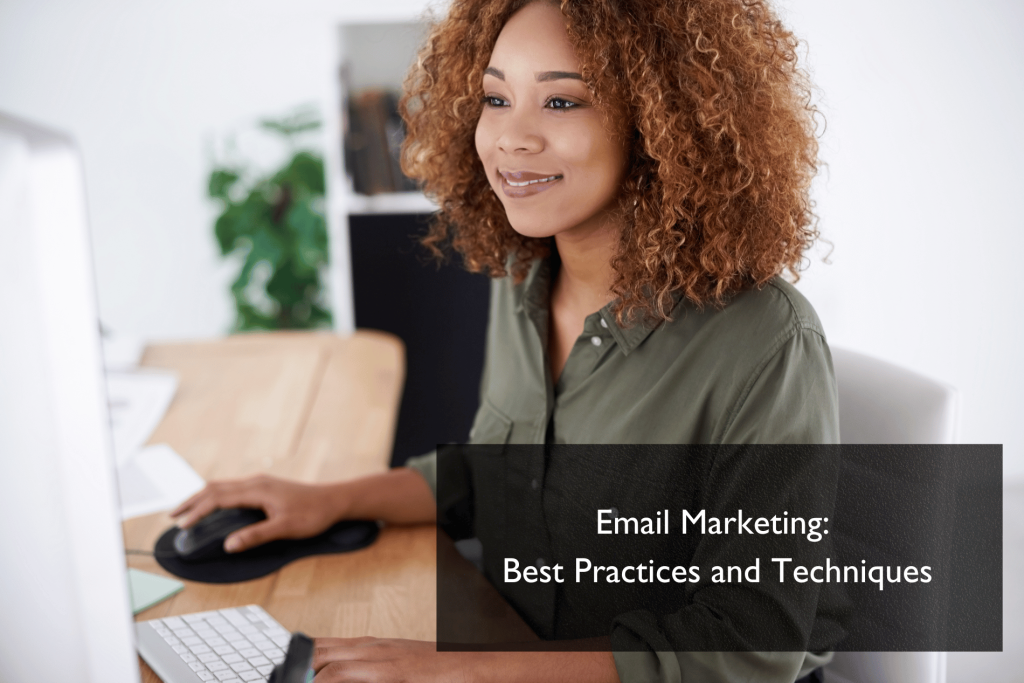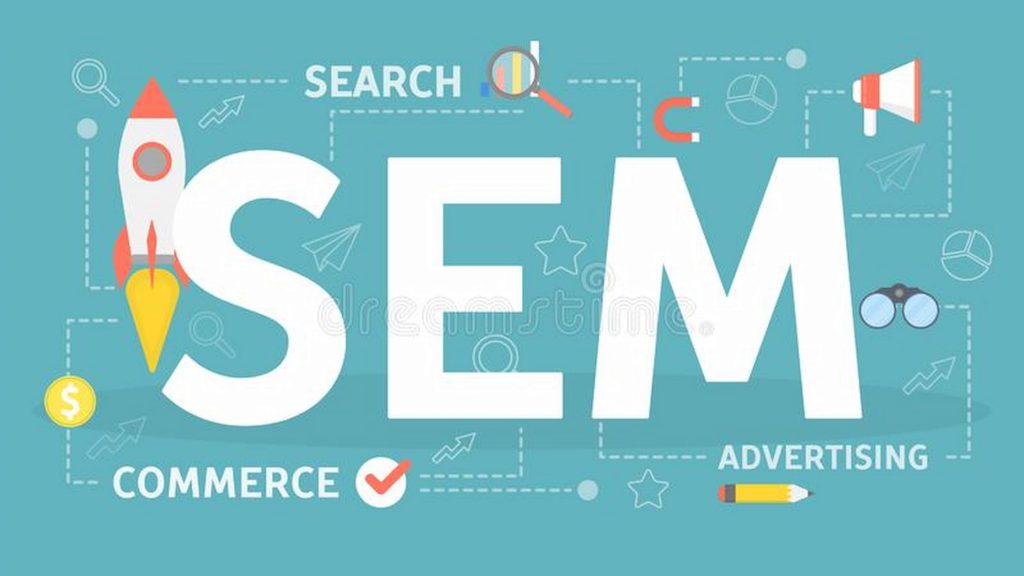Email Marketing: Best Practices and Techniques

Email Marketing: Best Practices and Techniques In a digital world filled with the buzz of social media, the instant ping of messaging apps, and an overwhelming array of marketing gadgets, there’s a quiet superhero that refuses to retire: email marketing. The timeless tool empowers businesses, big and small, to forge genuine connections with customers and propel their products or services to the spotlight. Amidst the ever-evolving digital landscape, email marketing is the powerful force of online communication. Why? Because it boasts a fantastic ability to reach, connect, and convert. But here’s the twist: with inboxes bursting at the seams, the key to success is mastering the art of personalized, attention-grabbing emails. Picture this: Your message cuts through the inbox clutter, landing in your recipient’s heart. How? By unleashing the secrets of email marketing’s prowess! The Enduring Relevance of Email Marketing Before we dive into the nuts and bolts, let’s address a critical question: why is email marketing still relevant in the age of social media dominance? The answer lies in its unique advantages: Unmatched Reach: Email marketing stands out as the undisputed reach champion in an era where the digital landscape is crowded with various communication channels. With a staggering 4.3 billion email users worldwide, it possesses an expansive and unparalleled reach that no other digital channel can match. To put this number into perspective, it’s nearly half the world’s population. Email marketing’s universal reach connects diverse users worldwide, spanning ages, professions, and cultures. Personalisation at Scale: Email allows for deep personalisation. You can segment your audience, tailor content, and deliver targeted messages, ensuring your emails resonate with each recipient. Conversion Powerhouse: Research consistently shows that email marketing has one of the highest conversion rates among digital marketing channels. A well-crafted email can lead to action, whether purchasing, signing up for a webinar, or downloading an ebook. Cost-Effective: Email marketing is cost-effective compared to many other forms of digital advertising. You can reach thousands of subscribers with a single, well-crafted email. Email Marketing Best Practices 1- Build a permission-based email list To build a permission-based email list, you need to collect email addresses from people who have permitted you to contact them. You can do this in a number of ways: – Add a sign-up form on your website where people can enter their email addresses to subscribe to your list. Make sure to let them know what they can expect to receive in your emails, such as exclusive offers, discounts, or new product announcements. – Promote your email list on your social media pages and encourage your followers to subscribe. You can also run contests and giveaways where people can enter to win a prize by subscribing to your email list. – If you own a physical retail store, you can collect email addresses from customers at the checkout counter or by offering them a discount on their next purchase in exchange for their email address. Once you have collected email addresses, you must send a confirmation email to each subscriber to ensure they want to receive your emails. This email should contain a link the subscriber must click to confirm their subscription. When a subscriber confirms their subscription, you can send them emails. Send them regular emails with valuable content, such as blog posts, articles, and special offers. You should also give them the option to unsubscribe from your list anytime. 2- Segment your email list This means dividing your email list into smaller groups based on shared characteristics like interests, demographics, or purchase history. This will allow you to send more targeted and relevant emails. 3-Personalise your emails People are likelier to open and read emails addressed to them by name and containing relevant content. You can use personalisation in your subject lines, email body copy, and images. Here is an example of a personalised email- 4-Write clear and concise subject lines Your subject line is the first thing people see, so making a good impression is necessary. Write subject lines that are clear, concise, and relevant to the content of your email. Here are some examples: Exclusive Offer Inside ???? Last Chance to Save 20%! Webinar Invite: Join Us Tomorrow Your Weekly Digest: Top Articles Breaking News: Exciting Updates! Your Invoice #123456 is Due Today Important Account Update Required Unlock Your Free Trial Now! Your Opinion Matters: Take Our Survey 5- Use mobile-friendly email templates More and more people are reading their emails on mobile devices, so using them is significant. Your email templates should be easy to read and navigate on all devices. 6-Include a clear call to action In email marketing, your message is only as effective as the action it inspires. Whether you have a brick-and-mortar store or an online presence, guiding your subscribers toward a specific course of action is fundamental to success. Tell your subscribers what you want them to do. Make your call to action (CTA) crystal clear, concise, and clickable. Use action-oriented words that convey urgency and purpose. Phrases like ‘Shop Now,’ ‘Discover More,’ ‘Grab Your Deal,’ or ‘Register Today’ can nudge your subscribers in the right direction. Craft a compelling and concise CTA with action-oriented words like ‘Shop Now,’ ‘Discover More,’ ‘Grab Your Deal,’ or ‘Register Today.’ A compelling CTA is your bridge to engagement and conversion. 7-Test and track your results Testing and tracking your email marketing results is necessary to see what’s working and what’s not. You can test different subject lines, email body copy, and call to action to see what resonates best with your audience. Effective email marketing is a continuous process of improvement. Monitor key metrics like open rates, click-through rates, and conversion rates. Use A/B testing to experiment with different elements (subject lines, content, visuals) and refine your strategy based on data-driven insights. 8-Use email automation: Email automation allows you to send emails to subscribers based on certain triggers, such
Generating Traffic With A Successful SEM Campaign

Is your business page not driving enough traffic as it should? Here is a read on using Search Engines to market your products or services to increase your visibility on Search Engine Result Pages and SERPs. Search Engine Marketing, SEM, is a marketing strategy to improve a website’s online visibility in SERPs. Like Search Engine Optimization, SEM can include techniques like rewriting a website’s content to achieve higher rankings. However, SEM refers to paid search or PPC. While there are many ways to attract new visitors to your website, Search Engine Marketing differs and may be the best for a business. A business can advertise on a search engine page when specific keywords are used in an online inquiry. Advertisers commonly bid on industry-specific phrases and word sets or highly relevant to a particular product or service. In that way, businesses have their ads placed in front of users alongside searches for queries. Businesses should focus on selecting a proper keyword strategy. You may think Search Engine Optimization and Search Engine Marketing are the same, but they differ. Using SEM gives you more control over your digital marketing efforts. SEO is suitable for a highly targeted optimization effort. SEM focuses on a larger tray of keywords while ensuring similar visibility is a success. A strength of SEM is that it gives you the opportunity as an advertiser to put your ads in front of motivated customers at the right time they want to make a purchase. It is a guarantee that SEM is a powerful way to drive traffic to your website, especially for a starting business. In addition, SEM tends to draw many first-time visitors to your pages. There is no other way to do this than Search Engine Marketing, which makes SEM a very effective way to promote your business. You pay a search engine to advertise for you. Very easy. The Groundwork of Search Engine Marketing Know Your Target Audience The first key to success is knowing the people you are targeting. Understanding your audience can produce more effective ads for the right people. The easiest way to do that? Well, your current potential customers can always be your starting point. But, first, create a survey or questionnaire to know what they like and dislike about the products, habits and even locations. It will be hard to know everything about them, but understanding a little about them through those survey sheets will give you more understanding of the people to target and how to launch a successful set of ads. Keywords! Keywords form the basis of search Engine Marketing, which should not be much of a surprise. First, you must conduct comprehensive keyword searches as the number one keyword management strategy. Then, identify keywords relevant to your business and likely to be used by customers when searching for products or services. A thorough keyword search will help you discover your business’s right keywords and identify negative ones. Negative terms aren’t harmful, but they are irrelevant to whatever you are offering. For example, if you sell ‘clay pots’, you might want to use keywords like; “Ways to use a clay pot”; avoid keywords like “the best type of clay for a DIY vase” unless you’re also selling ‘clay’. You definitely won’t drive customers with the latter keyword term. Comprehensive keywords will make your ad appear on people’s screens. Go for less but specific keywords for your products. This will give you the best traffic. Uncommon keywords are superlative in maximizing the value of every click. Ad Auctions To grow your business, be ready to invest in SEM, and once you are prepared, you will need to participate in ad auctions. We will look at ad auctions in Google Ads. Every paid ad on Google’s SERPs had to go through an auction. To enter an ad auction, you must identify the keywords you want to bid on and clarify how much you are willing to spend per click of each keyword because, of course, you’re dealing with a pay-per-click system. Google then determines if your keywords are obtainable or within a user’s search query, and then you are entered into the ad auction. However, not every ad will appear on every search related to that keyword. Some keywords don’t have much or no commercial intent to allow them to include ads on the page. For instance, typing ‘Content Creation’ into Google will not show any ads on your screen. Even if your keyword is a good fit for an ad, it may not necessarily mean you will win the bidding. This is because the ad auction considers two main factors to determine if your ad is worthy of being on the SERP – your maximum bid and your ad quality score. Remember, the more relevant your ad is to a user and how likely will a user click on your ad and enjoy it all add to your Quality Score. Once you’re set to use SEM, research relevant and commercial intent keywords, enter Ad Auctions and pay for your ads to appear on the SERPs. All these and adopting an SEM strategy that requires you to optimize paid search ads with a specific goal in mind. You must understand how paid ad platforms work and effectively manage variables that affect performances, such as keywords, budget and copy. Maximize the Strategy for CPC Targets Cost Per Click is the actual price you are prepared to pay for every click. You may need to consider a few things before deciding on a deserved CPC. Think about the proposed bid, the role of digital in your general ads budget, the campaign aim and how competitive it is. Cost Per Click is significant because it is the number that will determine how financially successful your paid search campaigns are and how much Google Ads will cost for you. Customize Your Landing Pages Landing pages are essential to the success of SEM. It is where every individual would be directed
